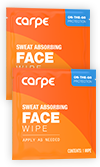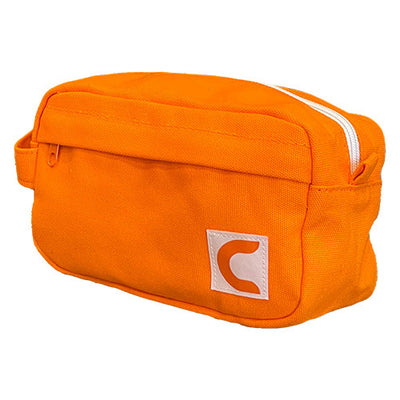Many people who struggle with hyperhidrosis also struggle with stinky sweat. The medical term for stinky sweat is bromhidrosis. It is one of several conditions that cause physiological issue related to sweating. Bromhidrosis occurs when bacteria present on the surface of the skin digest the substances that make up sweat. This is especially problematic for people who have overactive sweat glands in the axillary region due to the type of sweat glands in the armpit, the fact that the armpit is moist and dark which is where bacteria grow best, and because it is an area that is often affected by hyperhidrosis. This is where the need for antiperspirant and deodorant arises.[1]
Many people don’t understand what antiperspirant is or how it differs from deodorant, but it is an important distinction. Antiperspirant contains an active ingredient that enables it to reduce the amount of sweat a person can produce, while deodorant has antibacterial properties and a scent to mask the smell of body odor. Both deodorant and antiperspirant are powerful tools for someone who has hyperhidrosis.[2] But, for people who also have Bromhidrosis, deodorant is especially important. This is because the antibacterial aspect of deodorant kills the bacteria that convert sweat, which is actually odorless, into bad smelling metabolites. Deodorant also has a scent that acts as insurance, as it helps to mask any stinky smell from the bacteria that manage to escape death from washing and the antibacterial properties of deodorant.
It has been established that both antiperspirant and deodorant are important tools for people with hyperhidrosis, but which deodorants are the best?
Best Deodorants for People with Hyperhidrosis
Deodorants need to contain certain specific properties in order to help someone with hyperhidrosis. Due to the fact that bacteria cause sweat to stink, a deodorant with strong antibacterial properties is a must. Some deodorants contain antimicrobial metal ions or antimicrobial ceramics that help kill bacteria and prevent the formation of bad smelling molecules that result from the chemical break down of sweat. It is important that any deodorant for someone with hyperhidrosis contains one of these or a comparable antibacterial substitute. Another important feature a strong deodorant needs is a good fragrance. A fragrance can draw attention away from the smell of body odor and mask it so that other people don’t notice it. However, even with these features, deodorant alone is often not enough protection for people with hyperhidrosis because of the volume of sweat they produce.[1]
For someone with hyperhidrosis, sweat control is the main objective. Many people wonder whether they should use antiperspirant or deodorant in order for that to happen. To obtain optimal sweat control, antiperspirant needs to be part of the plan. Luckily, there are antiperspirant deodorants on the market that can reduce sweat production, kill bacteria, and mask the smell of body odor with a fragrance. These are the products that will be most helpful for someone with hyperhidrosis. Antiperspirants are considered to be the first line treatment for hyperhidrosis, and adding the properties of a deodorant on top of that makes antiperspirant deodorants even more effective. It is a good idea to choose a soft-solid antiperspirant deodorant as they tend to be most effective.[1]
It can be difficult to choose the right over-the-counter antiperspirant deodorant, but understand the active ingredients and learning how to read the labels can help. Here are some specific examples of antiperspirant deodorant products on the market that can help control sweat and eliminate odor:
In some instances a combination product may not be strong enough, in which case you should move on to a stronger antiperspirant. If you still want the benefits of a deodorant but you really need an antiperspirant, then try using a strong antiperspirant, like SweatBlock Clinical Strength Antiperspirant, and add a regular deodorant with a fragrance you like on top of it to mask any odor.
Unfortunately, antiperspirants can often leave stains, but it is possible to get antiperspirant out of clothes and keep your wardrobe safe. It may take some trial-and-error but you can find an antiperspirant and deodorant or a combination product that works for you. If you feel that antiperspirants and deodorants are not enough to control your sweat then looking into other treatments for axillary hyperhidrosis and finding other ways to manage your sweat can help.
Sources
- Perera, E., & Sinclair, R. (2013). Hyperhidrosis and bromhidrosis: A guide to assessment and management. Australian Family Physician, 42(5), 266-269. Retrieved November 6, 2018.
- Zirwas, M. J., & Moennich, J. (2008). Antiperspirant and Deodorant Allergy Diagnosis and Management. The Journal of Clinical and Aesthetic Dermatology, 1(3), 38-43. Retrieved October 3, 2018.






16790753702383.jpg?v=1679075372)

16790746985853.jpg?v=1679074700)


16790757289763.jpg?v=1679075731)










